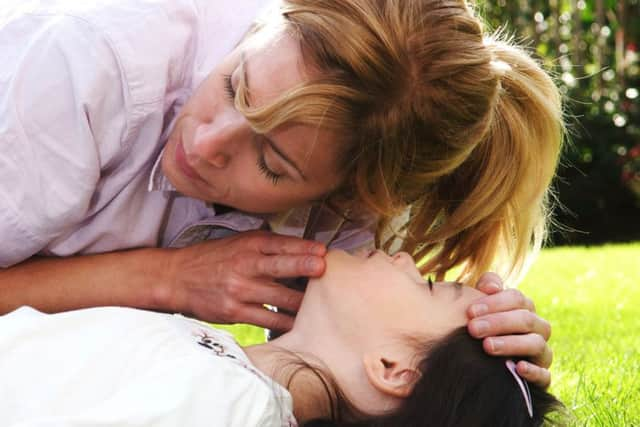FIRST AID: How to perform CPR on a child


This week: performing cardiopulmonary resuscitation (CPR) on a child aged one and over.
CPR stands for cardiopulmonary resuscitation. If a child is unresponsive and not breathing normally you will need to call 999 or 112 for emergency help and perform child CPR straight away.
What to do
Advertisement
Hide AdAdvertisement
Hide Adn After you have performed a primary survey, if you find the child is unresponsive and not breathing you should ask a helper to call 999 or 112 for emergency help while you start CPR. Ask a helper to find and bring a defibrillator if available. If you are on your own you need to give one minute of CPR before calling on a speaker phone. Do not leave the child to make the call or to look for a defibrillator.
n Start CPR. Place them on a firm surface and open their airway. To do this, place one hand on their forehead to tilt their head back and use two fingers from the other hand to gently lift the chin.
n Give five initial rescue breaths. Take the hand from the forehead, and pinch the soft part of the nose closed, allowing the mouth to fall open. With the head still tilted, take a breath and put your mouth around the child’s to make a seal. Blow into their mouth gently and steadily for up to one second, until the chest rises. Remove your mouth and watch the chest fall. That’s one rescue breath. Do this five times.
n You will then need to give 30 chest compressions. Kneel by the child and put one hand in the centre of the child’s chest. Push down a third of the depth of the chest. Release the pressure allowing the chest to come back up. Repeat this 30 times at a rate of 100 to 120 compressions per minute. The beat of the song Nellie the Elephant can help you keep the right rate.
Advertisement
Hide AdAdvertisement
Hide Adn After 30 compressions, open the airway and give two breaths. Keep alternating 30 compressions with two breaths until:
a. Emergency help arrives and takes over
b. The child starts showing signs of life and starts to breathe normally
c. Or a defibrillator is ready to be used
d. If the helper returns with a defibrillator, ask them to switch it on and follow the voice prompts while you continue with CPR.
n If the child shows signs of becoming responsive such as coughing, opening eyes, speaking, and starts to breathe normally, put them in the recovery position. Monitor their level of response and prepare to give CPR again if necessary. If you have used a defibrillator, leave it attached.
For quick, easily accessible first aid information, the St John Ambulance app is available free on smartphones and the website sja.org.uk offers demonstration videos and lots of free advice.